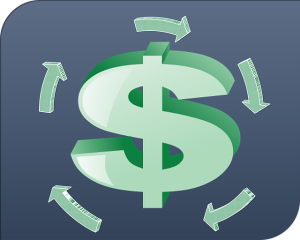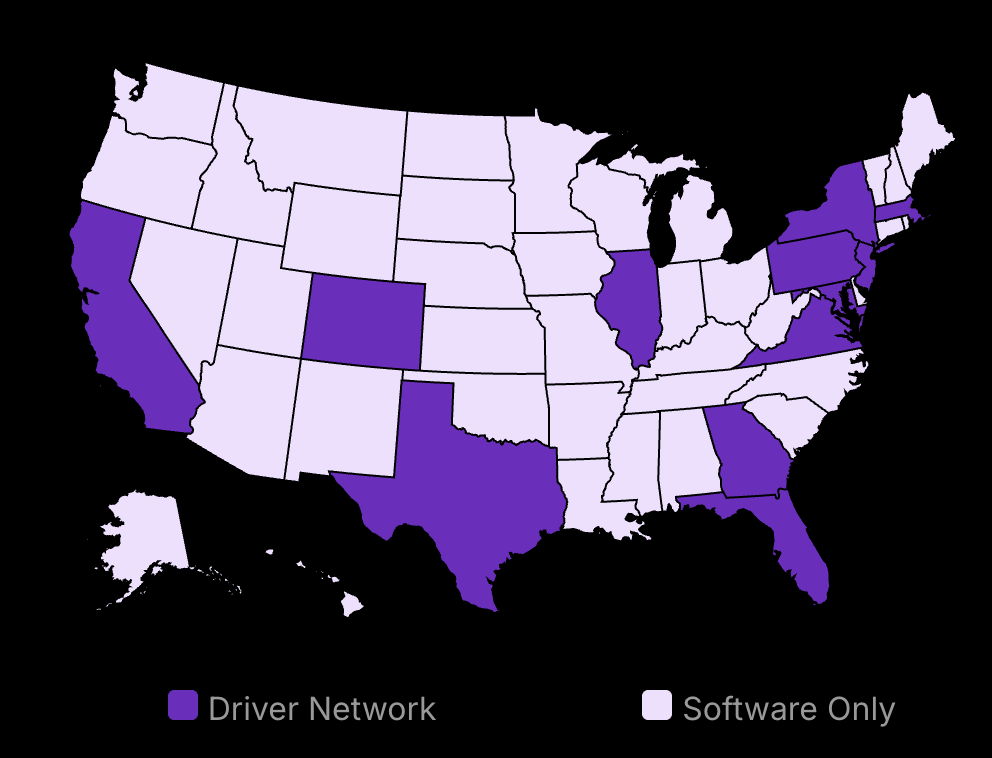Most businesses that fail don’t run out of ideas—they run out of cash, jeopardizing the company’s financial future.
Cash Forecasting Statistics
82% of businesses fail due to poor cash flow management or a poor understanding of cash flow
Are you just guessing when you’ll have money to expand, or are you utilizing cash flow forecasting tools? Or do you know exactly when and how much will be available to support your strategic decision-making?
There’s a stark difference between business owners who sleep well at night and those who stare at the ceiling wondering if they’ll make payroll. The first group has mastered cash flow forecasting.
Cash flow forecasting isn’t just about tracking money; it’s also about predicting your expected financial health. It’s about seeing around corners and knowing how to determine future cash positions. It’s knowing you can handle that big tax bill in April while funding your summer inventory push. It’s confidence built on facts, supported by a solid risk management system, not hope.
I’ve worked with hundreds of businesses—from startups to $50M operations—and I’ve witnessed the transformation when owners shift from reactive to proactive cash management, enabling them to make informed decisions. One client went from weekly panic attacks to calmly declining a rush order that would have destroyed their cash position.
But here’s what no one tells you: The most dangerous cash flow problems aren’t the obvious ones, highlighting the need for risk management. They’re hidden in the details of your forecasting method.
In 2025, with interest rates fluctuating and supply chains still unpredictable, your approach to cash flow forecasting needs precision, not approximation.
The Global Cash Flow Management Market
The global cash flow management market was valued at $834.34 million in 2023 and is projected to reach $5.13 billion by 2032, growing at a CAGR of 22.4% from 2024-2032
This guide will walk you through creating forecasts that work, whether you’re trying to survive a rough patch or planning your next growth phase.
Ready to transform your financial future? The difference between thriving and barely surviving starts with what you’ll learn next.

Boost customer satisfaction with just a few clicks
Most-Loved Features:
- On-demand drivers
- Real-time GPS tracking
- Delivery confirmation photos
- Over 50% of customers report a smoother delivery experience
How to Do Cash Flow Forecasting Right in 2025
Cash flow forecasting predicts your business’s money movement, helping you spot potential problems early.
Good forecasts combine historical data with future projections to support better decision-making.
Regular updates and the right tools are essential for forecast accuracy in today’s fast-changing economy.
Understanding Cash Flow Basics
Cash flow forecasting is the process of estimating the money that will flow in and out of your business over a set period, which is crucial for demonstrating future cash flows. This financial projection process helps businesses track expected income against expenses to determine if they’ll have enough cash to meet their obligations. Unlike profit projections, cash flow forecasts focus on the actual timing of money movements—when cash receipts will occur and when it must be paid out.
The benefits of accurate cash forecasting are significant when it comes to managing finances effectively, as it allows businesses to gain insights into their cash flow. First, it prevents cash shortfalls by giving you early warnings when cash might be tight, by analyzing sources of cash outflows. As shown in recent data, 43% of US mid-market companies face unexpected cash shortfalls of more than $50,000 every 20 days due to unreliable forecasts. Second, it supports better planning for growth initiatives, tax payments, and debt servicing. Third, it strengthens decision-making around investments, hiring, and expense management by providing a clear picture of available resources.
"Think of a cash flow forecast as a combination of budgeting and planning that helps you spot potential problems before they happen."
Despite its importance, many businesses struggle with common pitfalls in their financial systems and forecasting efforts, often undermining the business’s financial position. The first major issue is working with incomplete or fragmented data, which can severely impact your working capital management. When financial information is scattered across departments, forecasts lose accuracy. Second, many companies make the mistake of overrelying on historical data without considering all the data, including current market conditions or upcoming changes. Third, forecasts often fail because they’re not updated frequently enough to capture changing circumstances.
Key Components of Cash Flow Forecasts
A comprehensive cash flow forecast includes several essential elements. The starting point is your starting cash balance—how much money your business has in its accounts right now. Next comes projected cash inflows, which include all expected sources of incoming cash like customer payments, loan proceeds, and investment income, as well as any anticipated future cash inflows. Equally important are projected cash outflows, covering all planned expenses such as payroll, rent, inventory purchases, loan payments, and taxes.
The final component is the net cash position for each time in your forecast. This shows whether you’ll have a cash surplus or deficit at specific points in the future. Businesses that track these components across multiple time horizons (short-term, medium-term, and long-term) gain the most benefit from their forecasting efforts.
Step by Step to Create a Cash Flow Forecast
Creating an accurate cash flow forecast begins with gathering high-quality historical financial data. Start by collecting at least two years of past cash flow statements if available. This provides a baseline for understanding your business’s typical cash patterns. Extract information from your accounting software, bank statements, and financial reports. You should pay special attention to seasonal patterns, customer payment behaviors, and recurring expenses.
When organizing this historical data, categorize both cash inflows and cash outflows consistently. Common income categories include sales revenue (separated by product line or service type), loan proceeds, tax refunds, and investment income. For outflows, separate fixed expenses (rent, salaries) from variable costs (raw materials, shipping). This structured approach makes it easier to identify trends and patterns that will assist in meeting periodic reporting deadlines and inform your projections.
Projecting Future Cash Movements
With historical data as your foundation, the next step is projecting future cash flows. For income projections, start with your sales forecast, adjusting for your typical collection cycle. If customers usually pay 30 days after invoicing, factor this delay into your cash receipt timeline. For new business initiatives, be conservative in your revenue estimates and realistic about timing. Consider market trends and economic factors that might affect customer buying patterns or payment speeds.
For expense projections, begin with fixed costs that are predictable and regular. Then add variable expenses that fluctuate with business activity. Include planned one-time expenses like equipment purchases or office renovations. You shouldn’t forget to account for seasonal variations in both income and expenses. Finally, build in a contingency factor for unexpected costs—typically 10-15% of projected expenses.
Maintaining and Updating Your Forecast
A cash flow forecast is never “finished”—it requires regular updates to remain useful. It is better to set a schedule for reviewing and adjusting your forecast. Weekly updates work well for short-term forecasts (13 weeks), while monthly reviews are appropriate for longer-term projections. Each update should incorporate actual results from the previous period, replacing projections with real figures.
During these updates, analyze any significant variances between your forecast and actual results. Were certain customers slower to pay than expected? Did costs run higher in some categories? You can use these insights to refine future projections and ensure sufficient cash is available when needed. According to forecasting experts, this continuous improvement process is what separates basic forecasts from truly valuable financial tools. The most successful businesses make forecast accuracy a priority across all departments, not just within the finance team.
Choosing the Right Forecasting Horizon
Cash flow forecasting comes in different time frames, each serving distinct business needs. Short-term forecasts typically cover 13 weeks (one quarter) and focus on day-to-day cash management. These forecasts have the highest level of detail and accuracy, making them ideal for managing immediate cash needs and avoiding liquidity problems.
Medium-term forecasts extend from three months to one year. They support operational planning, including inventory management, staffing decisions, and marketing campaigns. These forecasts balance detail with a longer view, helping businesses prepare for seasonal fluctuations and plan quarterly initiatives.
Long-term forecasts look beyond one year and support strategic planning. While less detailed than shorter forecasts, they help businesses evaluate major investments, expansion opportunities, and long-term financing needs. The best practice is to maintain all three forecasting horizons simultaneously, with each one feeding information to the others.
When to Use Different Forecasting Methods
Different business situations call for different forecasting approaches. The direct method tracks actual cash movements and works best for short-term forecasts where precision is critical. This method is particularly valuable for businesses with tight cash positions or those experiencing rapid growth or change.
The indirect method starts with projected income and adjusts for non-cash items and timing differences. It’s more suitable for longer-term forecasts and strategic planning. Many businesses use a hybrid approach, applying the direct method for short-term forecasts (0-13 weeks) and the indirect method for medium to long-term projections.
Your choice should consider your business’s size, complexity, and specific needs. Small businesses with straightforward operations may do well with simple spreadsheet-based direct forecasts. Larger organizations with multiple revenue streams and complex operations usually benefit from more sophisticated approaches and dedicated forecasting software.
Leveraging Technology for Better Forecasts
Modern forecasting goes beyond basic spreadsheets. Purpose-built cash flow forecasting software offers significant advantages, including automated data collection, scenario modeling capabilities, and real-time updates. These tools reduce manual errors and save time, two critical factors in forecast accuracy.
When evaluating forecasting technology, look for systems that integrate with your existing accounting software and banking platforms. This integration enables automatic data flows and reduces manual entry. Also valuable are visualization features that present complex financial data in easy-to-understand dashboards and graphs. Good forecasting tools should allow for collaborative input from different departments while maintaining data security.
AI-powered forecasting represents the cutting edge of this technology. Machine learning algorithms can analyze historical patterns and external factors to improve forecast accuracy. According to recent case studies from multinational corporations, AI-powered forecasting models can reduce error rates by up to 50% compared to traditional methods. These advanced systems are particularly helpful in identifying subtle patterns and relationships that human analysts might miss.
AI-Driven Cash Flow Forecasting
40% of financial firms use AI-driven cash flow analytics, which improves liquidity management by 20-30%
Using Scenario Planning to Improve Forecast Reliability
The future rarely unfolds exactly as expected. Scenario planning helps businesses prepare for different possible outcomes by creating multiple forecast versions. You can start with your baseline forecast—your best estimate of what will likely happen. Then develop at least two alternative scenarios: an optimistic case and a pessimistic case.
In your optimistic scenario, model faster sales growth, quicker customer payments, or lower costs. For the pessimistic scenario, consider slower sales, delayed payments, price pressures, or unexpected cost increases. Some businesses add a “disaster scenario” that tests their ability to survive major disruptions like economic downturns or supply chain failures.
For each scenario, identify key indicators that would signal which path is unfolding. These early warning signs help you recognize when it’s time to shift strategies. Also, develop contingency plans for each scenario, outlining specific actions you’ll take if that future emerges. This preparation transforms forecasting,g from a passive prediction exercise into an active planning tool that builds business resilience.
Cash flow forecasting helps businesses in numerous ways beyond basic financial planning, including preparing for different cash flow scenarios. It serves as an early warning system during the cash forecasting period to prevent financial crises for potential cash shortages, allowing companies to take corrective action before problems become critical. It also supports better inventory management by helping businesses balance stock levels with expected demand and available cash. Perhaps most importantly, good forecasting builds confidence among investors, lenders, and other stakeholders by demonstrating financial discipline and forward thinking.
Importance of Cash Inflows and Cash Outflows Management In The U.S. Mıd-Market
43% of US mid-market companies depend on unreliable cash flow forecasts and experience an unexpected cash shortfall of over $50,000 every 20 days
Mastering Cash Flow Projection Techniques for Better Accuracy
Advanced projection methods significantly reduce forecast variances
Software integration can improve accuracy by 30-40%
Regular recalibration of forecasts is essential for maintaining reliability
Cash flow forecasting starts with choosing the right methodology. Companies that select appropriate projection methods and leverage modern tools consistently outperform competitors in financial planning. The first step any business should take when creating a cash flow forecast is to assess their current financial position thoroughly, including all cash accounts, outstanding receivables, and upcoming payables.
Choose the Right Projection Method
The foundation of accurate cash flow forecasting lies in selecting the right projection method. The two primary approaches are direct and indirect methods, each with distinct advantages.
The direct method tracks actual cash inflows and outflows based on expected transactions. It provides detailed visibility into specific cash movements, making it ideal for short-term forecasting. This method works by tracking every dollar coming in and going out of the business. For example, a construction company might use the direct method to track progress payments from clients alongside material purchases and subcontractor payments.
The indirect method starts with net income and adjusts for non-cash items and changes in working capital. This approach is typically faster to implement and works well for long-term strategic planning. It’s particularly useful for businesses with complex financial structures or those seeking to understand broader financial patterns rather than granular cash movements.
Selection Criteria Based on Business Characteristics
For small businesses with straightforward operations, the direct method often proves most beneficial. When cash flow is tight and you need precise timing of cash movements, this approach provides clear visibility. Retail businesses, service providers, and companies with simple supply chains often benefit most from this approach.
Medium to large enterprises with complex operations may find the indirect method more manageable. Companies with multiple departments, product lines, or subsidiaries can use this method to get a broader picture without getting lost in thousands of individual transactions. Many CFOs prefer this method for long-range planning while using direct methods for short-term cash management.
Hybrid approaches are becoming increasingly common in 2025. Many businesses use direct methods for 30-90 day forecasts and indirect methods for longer-term projections. Financial software now makes it easier to maintain both types of forecasts simultaneously, giving finance teams the best of both worlds.
Leveraging Software Tools for Precision
Modern cash flow forecasting has evolved beyond spreadsheets. The right software tools can transform forecast accuracy and save countless hours of manual work.
Leading Cash Flow Forecasting Solutions for 2025
Several software platforms stand out in 2025 for their advanced forecasting capabilities:
Agicap: Specializes in cash management for small to mid-sized businesses with strong banking integration features. Their platform connects to over 9,000 banks worldwide, providing real-time cash position updates.
Float: Offers direct integration with major accounting platforms like QuickBooks, Xero, and FreshBooks, making it ideal for businesses already using these systems.
Fluidly: Employs AI to analyze historical patterns and suggest forecast adjustments. Their anomaly detection feature flags unusual transactions that might otherwise distort forecasts.
Caflou: Combines cash flow forecasting with project management tools, making it particularly valuable for service-based businesses managing multiple client projects.
Dry run: Focuses on scenario planning capabilities, allowing businesses to model different future outcomes and their cash implications.
The main advantage of these tools over traditional spreadsheets is their ability to connect directly to banking and accounting systems. This integration eliminates manual data entry and reduces the risk of human error. Most modern platforms also offer visualization features that make complex cash flow patterns easier to understand.
Implementation Best Practices
When integrating forecasting software with existing systems, begin with a thorough data cleanup in your accounting system. Many implementation failures stem from poor-quality financial data being imported into the new system.
You can start with a small scope, such as forecasting one department or division, before rolling out company-wide. This approach allows you to refine your processes before scaling up. Most successful implementations also include formal training for all financial team members to ensure consistent usage patterns.
Implementing Rolling Forecasts for Continuous Accuracy
Static annual forecasts have become obsolete in today’s fast-changing business environment. Rolling forecasts provide a continuously updated view of future cash positions.
A rolling forecast maintains a consistent time horizon by adding a new period as each current period ends. For example, a 12-month rolling forecast will add July 2026 to the forecast as soon as July 2025 concludes. This approach ensures your forecast always extends the same distance into the future.
The primary benefit of rolling forecasts is that they prevent the “planning cliff,” where visibility suddenly drops as you approach the end of a static forecast period. They also force regular review and recalibration of assumptions, which improves overall accuracy.
Practical Implementation Steps
To implement rolling forecasts effectively, first determine your optimal forecast horizon. Most businesses use either 12-month or 18-month rolling periods. Shorter horizons work well for fast-changing industries, while stable businesses may benefit from longer views.
Next, establish a regular cadence for updates. Monthly updates work well for most businesses, though some industries with rapid cash flow changes may benefit from weekly recalibration. Each update should include:
Adding the new period to the forecast horizon
Reviewing actual results against forecasted figures
Analyzing variances to improve future predictions
Adjusting assumptions based on new market information
Technology plays a crucial role in making rolling forecasts manageable. Without appropriate software, the constant updating becomes too labor-intensive for most finance teams. Look for tools that automate data collection and provide variance analysis capabilities.
Enhancing Accuracy with Driver-Based Forecasting
Traditional forecasting often relies on historical trends and simple growth assumptions. Driver-based forecasting improves accuracy by linking financial projections to operational metrics that directly influence cash flow.
Driver-based forecasting identifies the key business factors that truly impact cash position. For example, a SaaS company might use customer acquisition rates, churn percentages, and average contract values as primary drivers. When these operational metrics change, the forecast automatically updates to reflect their cash implications.
This approach connects financial forecasting with operational reality. When sales teams project changes in close rates or marketing anticipates campaign impacts, these operational shifts automatically flow through to cash projections. The result is a more responsive forecast that adapts to business changes rather than simply projecting historical patterns forward.
Identifying Your Key Drivers
The process begins by identifying the metrics that genuinely drive your business’s cash flow. Common drivers include:
Sales conversion rates
Customer retention metrics
Production capacity utilization
Employee productivity measures
Inventory turnover rates
Days sales outstanding (DSO)
Vendor payment terms
After identifying these drivers, establish mathematical relationships between them and your cash position. For instance, you might determine that each 1% change in customer churn rate affects monthly cash receipts by $50,000 with a two-month lag, which requires understanding cash flow sources.
The most effective driver-based forecasts limit focus to the 5-7 most impactful drivers rather than trying to model everything. This focused approach improves both usability and accuracy. Finance teams should collaborate with operational departments to ensure driver metrics are being tracked consistently and accurately.
Scenario Planning for Forecast Resilience
Even the most sophisticated forecast represents just one possible future. Scenario planning expands this view by modeling multiple potential outcomes based on different assumptions.
Effective scenario planning typically includes three standard scenarios:
Base case: Your most likely outcome given current information
Upside case: What happens if conditions are more favorable than expected
Downside case: What happens if conditions deteriorate
Each scenario should include complete cash flow projections and highlight key decision points or trigger events. This approach helps businesses prepare contingency plans before they’re needed.
The most valuable aspect of scenario planning isn’t necessarily predicting the exact future, but rather preparing the organization to respond quickly as conditions change. When leadership regularly reviews multiple scenarios, they develop mental models that speed decision-making when actual conditions change.
Practical Scenario Development Techniques
You can start by identifying the variables with the highest impact and uncertainty. Common scenario variables include:
Major customer acquisition or loss
Supply chain disruptions
Interest rate fluctuations
Regulatory changes
Competitor actions
Technology disruptions
For each scenario, develop a coherent narrative that explains how these variables interact. Avoid creating scenarios that simply adjust a few numbers up or down. Instead, think through the logical connections between different business factors.
When implementing scenario planning, avoid common pitfalls like creating too many scenarios (which leads to decision paralysis) or scenarios that aren’t sufficiently different from each other. Three to four well-developed scenarios usually provide sufficient planning coverage.
Turning Forecast Accuracy into Business Advantage
Accurate cash flow forecasting isn’t just about having better numbers—it’s about using those insights to create a competitive advantage. Companies with superior forecasting capabilities can pursue opportunities that others must avoid due to cash uncertainty.
The Average Annual Cost of An Unreliable Cash Flow Forecast
The average annual cost of unreliable cash flow forecasts for US mid-sized companies is $465,000
Businesses with high-confidence forecasts can negotiate better terms with suppliers by guaranteeing payment timing. They can also make strategic investments during industry downturns when competitors are focused on conservation. McKinsey research indicates that companies making strategic moves during economic contractions outperform peers by an average of 10% in shareholder returns over the following decade.
Accurate forecasting also improves relationships with external stakeholders. Banks and investors consistently offer better terms to businesses that demonstrate sophisticated financial planning capabilities. Many lenders now specifically request rolling cash forecasts as part of lending applications, with forecast accuracy tracked over time as a risk indicator.
Internal operations benefit as well. When departments trust the finance team’s projections, they can confidently make operating decisions without building excessive buffers. This operational efficiency often translates to millions in savings for mid-sized and large enterprises.
To maximize these advantages, finance teams should regularly communicate forecast insights to operational leaders in accessible formats. Visual dashboards that highlight key metrics and trends generally work better than detailed spreadsheets for driving organizational action.
Good Cash Flow Forecasting

Effective cash flow forecasting plays a crucial role in not just numbers—it’s about creating a robust risk management system and leveraging liquidity planning and treasury management technology to enable well-informed strategic decisions through cash flow models for your business in 2025 and beyond. By mastering the fundamentals and establishing a strong cash culture, choosing the right projection methods, and using modern tools, you’re setting your business up for growth rather than just survival.
The challenges in cash flow management are real, but now you have practical strategies to identify problems before they become crises. You understand how to create accurate forecasts and adjust them as market conditions change.
Cash Flow Forecasting Challenge
32% of finance professionals cited regulatory constraints as a significant cash flow management challenge
Remember that cash flow forecasting is an ongoing process that finance and treasury teams can improve with practice. Start small if you need to, but start today. Whether you’re dealing with daily cash positioning, seasonal fluctuations, planning for expansion, or implementing cost-cutting measures, your new forecasting skills will help you make data-driven decisions with confidence.
Financial stability doesn’t happen by accident. It comes from consistent attention to cash flow patterns and proactive management. The work you put into forecasting today creates the foundation for tomorrow’s success.
Your business deserves the clarity and control that comes from knowing exactly where your money is going and when it will arrive, driven by accurate long-term projections.


























